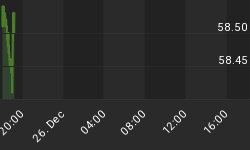First, I'd like to give a sincere thanks to Mr. Bruce Stratton for hosting the valuable web site, SafeHaven. I don't recall how I encountered Mr. Stratton though I definitely found his views sympathetic to what I had written in Escaping Oz: Navigating the crisis. There is a great deal of attention paid to the stock market(s) and that is understandable given the popularity of indices such as the Dow Jones, S&P 500 and Nasdaq. While I don't want to minimize the effect of a contracting stock market, a far greater concern lies in the credit market.
In the Escaping Oz book, I gave the metaphor of credit deflation using the 1930s example as a beach ball and the contemporary example as a blimp. There is far more air to let out of the credit bubble now than in the devastating Great Depression. The authorities, or what I call the Wizards, have an intrinsic understanding of this problem given the unprecedented steps taken to swell the balance sheets of central banks. Now an even more desperate attempt is at hand by the Wizards through the promotion of negative interest rates.
In its simplest terms, negative interest rates mean a depositor or creditor receives less than their original principal, by design. According to Elliott Wave International, as attributed to Bloomberg, one third of all Eurozone government debt sported a negative rate as of the end of 2015. In addition, the ECB's overnight money market rate, and 12-month deposit rates in Swiss, Danish, Japanese and Swedish banks are also negative. Deposit rates plunging into negative territory represent a confirmation of the deflationary forces I noted earlier (the blimp attempting to lose its air). Investor and consumer psychology has turned so that the central banking authorities are desperate to stimulate spending. There are a number of fallacies at work when discussing negative rates, all of them seemingly glossed over by the promoters of this spurious policy. The negative rates are also stimulating a race to the bottom in currency valuation. This currency race has no winners.
The full implementation of these policies is more workable once all transactions are digital. This allows for the Wizards to exercise greater control over the economy. Most of what we consider money is in digital cyberspace, most but not all. The "not all" remainder is what the Wizards would like to manage.
Stock prices also exist in the realm of digital cyberspace, which why it is possible for stock values to seemingly disappear. Stock prices are poised for an extended period of below average returns. The actual form of a stock price chart over the next decade is subject to considerable debate. But the expected return in 2016 in the ensuing decade is not comparable to what it was, say in 2006. There are a number of reasons for this conclusion though it would take a considerable amount of words to develop all of it. John Hussman (Hussman Funds) does a marvelous job of explaining the expected return concept. I outline some of the reasons as well in the aforementioned book. Don't discount the effect of politics in what lies ahead.
The Presidential election of 2016 is a continuation of the contentious politics that emerged after the 2008 election and the birth of the Tea Party. The electorate is angry for a variety of reasons and that stands to worsen as the economy deteriorates. I have discussed the emergence of free-standing third parties that would run for state and federal offices. When I say "free-standing" I literally mean parties that are not affiliated with the GOP or Democrats and can garner enough national interest so that the electorate considers them the equivalent. These parties would then win seats in Congress and other state races. I speculated on what would happen in the election of 2020 with the consideration of the 2016 election, cyber terror, economic disturbances, and two of these free-standing parties in an upcoming novel called 2020. The novel will explore what happens when politics and economics intersect. The reader will of course understand that they are reading fiction, but will be left to ponder if the novel's ending could actually happen. I am attempting to publish this work through Inkshares.
Finally, I'd like to wish Mr. Stratton a well-deserved break from posting articles to SafeHaven. Good luck to you sir in your future endeavors!















